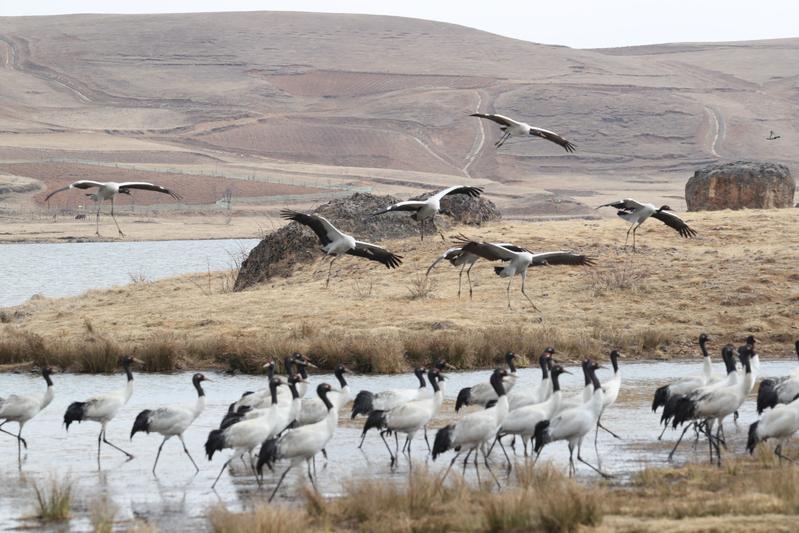 Black-necked cranes gather at Dahaizi Wetland at a national reserve in Zhaotong, Yunnan province, on Thursday. Some 1,730 such cranes, which are under top-level protection, are wintering at the wetland. (ZHANG GUANGYU / FOR CHINA DAILY)
Black-necked cranes gather at Dahaizi Wetland at a national reserve in Zhaotong, Yunnan province, on Thursday. Some 1,730 such cranes, which are under top-level protection, are wintering at the wetland. (ZHANG GUANGYU / FOR CHINA DAILY)
The National Forestry and Grassland Administration announced on Thursday that China has added 18 wetlands to a list of those deemed of international importance, including Yanqing Wild Duck Lake in Beijing and Baima Lake in Huaian, Jiangsu province.
Thursday is World Wetlands Day, which falls annually on Feb 2.
China now has 82 wetlands of international importance covering about 7.6 million hectares, ranking fourth in the world, according to the administration.
A report on the environmental status of the wetlands in 2022 that was released on Thursday showed that their biodiversity has improved, with 2,391 species of plants inhabiting them. In addition, degraded wetlands in Heilongjiang, Hubei, Shandong and Hainan provinces have been restored, according to the report.
The list of wetlands of international importance is approved by the secretariat of the Ramsar Convention on Wetlands, an intergovernmental treaty signed in Ramsar, Iran, in 1971, that provides the framework for national action and international cooperation for the conservation and use of wetlands and their resources.
Since China joined the convention in 1992, it has added 202,600 hectares of wetlands and has restored 467,400 hectares of degraded wetlands, the administration said.
Special measures to protect mangroves and to limit the spread of smooth cordgrass, an invasive species to China, have been taken.
Referred to as the "kidneys of the earth" and as "species gene pools", wetlands conserve and clean water, maintain biodiversity and help contain floods and prevent drought.
Wetlands include coastal areas with a water depth of no more than six meters at low tide, but exclude paddy fields and expanses of water used for aquaculture and artificial breeding, the administration said.
According to the United Nations Environment Programme, over the past 200 years, many wetlands have been drained to make way for farmland or infrastructure development.
Around 35 percent of the world's wetlands were lost between 1970 and 2015. The loss rate has been accelerating since 2000.


